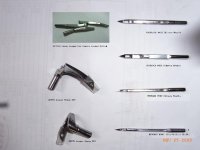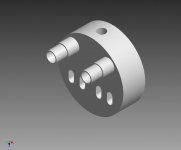Hello,
I am going to be trying some tig welding under the magnification of a stereo microscope. I have one major concern to address, and was hoping to get fellow welders input on the topic. Let me describe what I am seeing on the various website photographs and images that are related to this type of tig welding that I am concerned with. I see everyone not use any kind of shielding from the light or welding flash while looking through the eye optics during the welding process. I would think that there should be some sort of drape like shielding that separates the welder from the welding flash. I would not usually be concerned with the issue, except I work at a national lab and safety is number one. If I start welding like I have seen so far, I will be written up no doubt. Does anyone have any input or experience with this issue? I would like to address this before I try this method of tig welding. I look forward to reading any input for a efficient solution to this.
I am going to be trying some tig welding under the magnification of a stereo microscope. I have one major concern to address, and was hoping to get fellow welders input on the topic. Let me describe what I am seeing on the various website photographs and images that are related to this type of tig welding that I am concerned with. I see everyone not use any kind of shielding from the light or welding flash while looking through the eye optics during the welding process. I would think that there should be some sort of drape like shielding that separates the welder from the welding flash. I would not usually be concerned with the issue, except I work at a national lab and safety is number one. If I start welding like I have seen so far, I will be written up no doubt. Does anyone have any input or experience with this issue? I would like to address this before I try this method of tig welding. I look forward to reading any input for a efficient solution to this.




